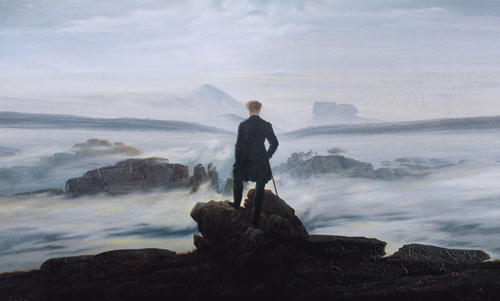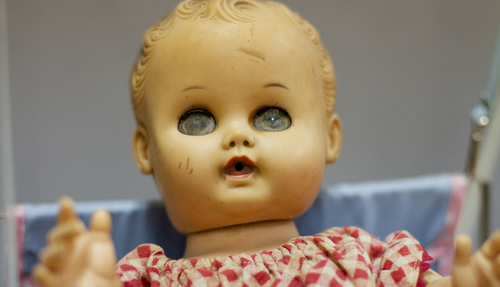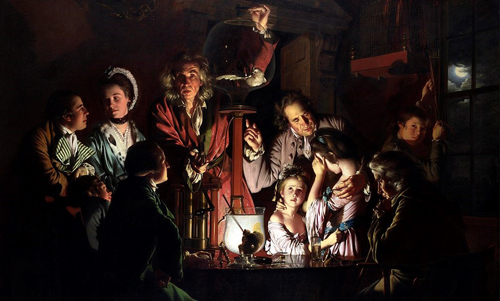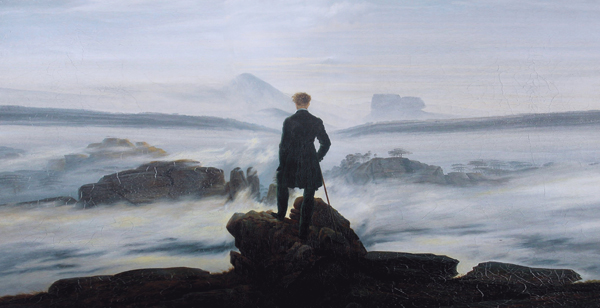This resource is great for:
Unpicking the key themes of Gothic literature.
Summary:
Examples highlighting key tropes in Gothic literature and accompanying exercises to explore these in more detail.
Download this resource:
Reading Gothic – PDF version
Reading Gothic – Word doc
Introduction
Everyone has secrets – secrets that would be deemed unpalatable by society or even secrets that we find hard to acknowledge ourselves. Gothic literature is all about exploring the emotions, stories and traumas that we normally keep repressed: bringing taboos out into the open and confronting our fears through the medium art.
Novels like Mary Shelley’s Frankenstein, Bram Stoker’s Dracula, Emily Brontë’s Wuthering Heights and Robert Louis Stevenson’s The Strange Case of Dr Jekyll and Mr Hyde, to name just a few, have created characters and atmospheres that send a shiver down the spine, but pinpointing exactly what makes these texts so insidiously disturbing can be tricky. Below are a series of examples and exercises that can help to unpick where the key tropes of Gothic literature come from and why they have such a pronounced effect on readers.
Activities
Part One – The Sublime
The first ever self-acknowledged Gothic novel is The Castle of Otranto, published by politician, society man and general eccentric Horace Walpole in 1764. The timing of this publication was crucial when it came to establishing the Gothic genre as it coincided with the blossoming of another genre – Romanticism.
Romanticism and Gothic in many ways evolved alongside each other, with many writers including Lord Byron, Percy Bysshe Shelley, Mary Shelley and John Keats all darting between these two genres in their work of the early 19th century.
A common theme of these works is celebrating the wonder of nature through the written word, which in turn led to a new philosophical concept – the sublime. In short, the sublime is a sense of the awe-inspiring power of nature and the part of man in the wider natural world.
Exercise One
In pairs have a look at the picture below, a popular painting from 1817 entitled Wanderer above the Sea of Fog by Caspar David Friedrich. Discuss the relationship of power between the man and the landscape. You might want to think about the emotions shown in this picture, the way that nature is represented and what the man in this image might be like.

Exercise Two
Bearing in mind what you have discussed, compare the use of the sublime in the following two quotations and how they show two sides of nature – both terror and beauty.
From ‘Frankenstein’ by Mary Shelley:
During this short voyage I saw the lightning playing on the summit of Mont Blanc in the most beautiful figures. The storm appeared to approach rapidly, and, on landing, I ascended a low hill, that I might observe its progress. It advanced; the heavens were clouded, and I soon felt the rain coming slowly in large drops, but its violence quickly increased … While I watched the tempest, so beautiful yet terrific, I wandered on with a hasty step. This noble war in the sky elevated my spirits; I clasped my hands, and exclaimed aloud, “William, dear angel! this is thy funeral, this thy dirge!”.
From ‘I Wandered Lonely as a Cloud’ by William Wordsworth:
I wandered lonely as a cloud
That floats on high o’er vales and hills,
When all at once I saw a crowd,
A host, of golden daffodils;
Beside the lake, beneath the trees,
Fluttering and dancing in the breeze.
For oft, when on my couch I lie
In vacant or in pensive mood,
They flash upon that inward eye
Which is the bliss of solitude;
And then my heart with pleasure fills,
And dances with the daffodils.
Part Two – The Uncanny
The next trope that is used in Gothic literature can be seen in many places still today – in horror films, science fiction and even in real life. It’s the special ingredient that gives things like ventriloquists’ dummies, porcelain dolls and jack-in-the-boxes an extra edge of creepiness that it can be quite hard to explain.

We all know logically that a doll is not going to hurt us – it is an inanimate object with no agency of its own. Any fears that we have about dolls or puppets are based on the idea that they could behave unusually and come to life because we have seen numerous examples of this in literature, film and TV. The same sort of fear could arise from something more understandably frightening, like a severed finger. Even as an observer (someone still with all their fingers!), we may justifiably feel afraid of this finger. As with the doll, the finger is inanimate and has no capacity to harm us, yet the new-found context of this inanimate object and the wanderings of our imaginations make it disturbing. We may be asking ourselves, ‘Where has this finger come from?’ or ‘Could the same thing happen to my finger?’.
Father of psychoanalysis Sigmund Freud came up with a name for this feeling of uneasiness; he called it ‘unheimlich’ or ‘unhomely’, which has developed into our English word ‘uncanny’. Freud deduced that this feeling of discomfort comes from situations where an object is both familiar and unfamiliar at the same time. So the finger, for example, makes us feel uncomfortable because it is something familiar to us as a body part that has been put into a strange and unfamiliar new context, separated from a hand.
Exercise one
Come up with 3 different things that could be described as ‘uncanny’ according to Freud’s definition – they can be from anywhere: books, films, art, or real life.
Exercise two
There are many character archetypes of Gothic literature. Explain what is uncanny about the following Gothic creations:
- Frankenstein’s monster
- Count Dracula
- Dr Jekyll and Mr Hyde
- The Invisible Man
Part Three – Inherited Evil
When we imagine a typically Gothic text, it usually involves a haunted house or perhaps a monster hell-bent on destroying our protagonists. Something is always brooding and bubbling under the surface, biding its time until it can carry out its evil plan. Yet when we look at plots more closely, the monsters of the story are frequently more complex than simply an evil force imposing themselves on innocent bystanders – they sometimes enact moral lessons.
In many ways, Gothic literature ties into tragic literary traditions. Ancient Greek tragedies such as Sophocles’ Oedipus Rex, and Renaissance tragedies such as William Shakespeare’s Macbeth and Hamlet, are all predicated on the figure of the tragic hero. In these texts our protagonist is a noble figure with one vital flaw, his harmartia. This harmartia could be jealousy, hubris, greed or any number of negative character traits that undermines his overarching positive attributes and lead to his ultimate downfall as the story progresses.
This same plot trajectory also exists within Gothic literature, as our protagonists make poor moral choices and pay the price by becoming literally and metaphorically haunted by the ghosts of their decisions. Their lives fall apart and powers beyond their control take over not only their lives, but the lives of their children for generations to come. It is for this very reason that ghosts and ruined houses are such a prominent theme within Gothic literature. Noble families fall from grace and pay many times over for the sins of their ancestors, while the ghosts and demons that haunt the living are given more complex and sympathetic backstories. These tales blur the line between right and wrong, revenge and justice, good and evil.

Exercise one
Given what you now know about the trope of inherited evil, how do you feel about the following descriptions of monsters from famous gothic texts?
From ‘Wuthering Heights’ by Emily Brontë:
I muttered, knocking my knuckles through the glass, and stretching an arm out to seize the importunate branch; instead of which, my fingers closed on the fingers of a little, ice-cold hand! The intense horror of nightmare came over me: I tried to draw back my arm, but the hand clung to it, and a most melancholy voice sobbed, ‘Let me in—let me in!’ ‘Who are you?’ I asked, struggling, meanwhile, to disengage myself. ‘Catherine Linton,’ it replied, shiveringly (…) ‘I’m come home: I’d lost my way on the moor!’ As it spoke, I discerned, obscurely, a child’s face looking through the window. Terror made me cruel; and, finding it useless to attempt shaking the creature off, I pulled its wrist on to the broken pane, and rubbed it to and fro till the blood ran down and soaked the bedclothes: still it wailed, ‘Let me in!’ and maintain its tenacious gripe, almost maddening me with fear. ‘How can I!’ I said at length. ‘Let me go, if you want me to let you in!’ The fingers relaxed, I snatched mine through the hole, hurriedly piled the books up in a pyramid against it, and stopped my ears to exclude the lamentable prayer.’
From ‘Frankenstein’ by Mary Shelley:
You are in the wrong,” replied the fiend; “and instead of threatening, I am content to reason with you. I am malicious because I am miserable. Am I not shunned and hated by all mankind? You, my creator, would tear me to pieces and triumph; remember that, and tell me why I should pity man more than he pities me? You would not call it murder if you could precipitate me into one of those ice-rifts and destroy my frame, the work of your own hands. Shall I respect man when he condemns me?
Exercise two
Can you think of any examples from your favourite books of similar downfalls of heroes or sympathetic villains?
Part Four – Atavism
The late 18th and early 19th century were periods of great scientific innovation as well as literary innovation. Following on from the Age of Enlightenment, a movement that swept across Europe, placing reason as the top priority of philosophical and scientific thought, the limits of what science could achieve seemed boundless.
Exercise one
Look at the image below, a painting from 1768 entitled An Experiment on a Bird in an Air Pump by Joseph Wright of Derby. In the painting, light is symbolically used to represent knowledge. Discuss how each person sitting around the table is reacting to the experiment and the light simultaneously. What do you think this says about their personalities, their roles in the group and what they represent about society as a whole?

Given the notion at the time that progress must be continuous and that science and society should aim to evolve and develop interminably, a natural anxiety grew that progress might in fact come to an end and humans may regress rather than progress.
This anxiety comes to life in Gothic literature through the theme of atavism, a term which means the re-emergence of long-forgotten ancestral traits in younger generations. In some texts this can be seen through the appearance of disfigured characters, as writers perceived this to be a way of showing the breaking down of family bloodlines. However, with the emergence of Darwin’s Theory of Evolution, these ancestral traits can also be animalistic, showing mankind itself breaking down to its truly ancient forms.
Atavism of this kind can be physical or emotional, with characters taking on animalistic physical attributes or losing human emotions and sensibilities, such as empathy.
Exercise two
- Take a look at the extracts below and try to isolate the part of each description that is animalistic and the parts that seem more human.
- Both human and animal traits can be disturbing when put side by side. Can you pinpoint any techniques each writer employs to make these two sides of Count Dracula and Dr Jekyll and Mr Hyde particularly disturbing?
From ‘Dracula’ by Bram Stoker:
His face was a strong – a very strong – aquiline, with high bridge of the thin nose and peculiarly arched nostrils; with lofty domed forehead, and hair growing scantily round the temples, but profusely elsewhere. His eyebrows were very massive, almost meeting over the nose, and with bushy hair that seemed to curl in its own profusion.
The mouth, so far as I could see it under the heavy moustache, was fixed and rather cruel-looking, with peculiarly sharp white teeth; these protruded over the lips, whose remarkable ruddiness showed astonishing vitality in a man of his years. For the rest, his ears were pale and at the tops extremely pointed; the chin was broad and strong, and the cheeks firm though thin. The general effect was one of extraordinary pallor.
Hitherto I had noticed the backs of his hands as they lay on his knees in the firelight, and they seemed rather white and fine; but seeing them now close to me, I could not but notice they were rather coarse – broad, with squat fingers. Strange to say, there were hairs in the centre of the palm. The nails were long and fine, and cut to a sharp point. As the Count leaned over me and his hands touched me, I could not repress a shudder.
From ‘The Strange Case of Dr Jekyll and Mr Hyde’ by Robert Louis Stevenson.
All at once, I saw two figures: one a little man who was stumping along eastward at a good walk, and the other a girl of maybe eight or ten who was running as hard as she was able down a cross street. Well, sir, the two ran into one another naturally enough at the corner; and then came the horrible part of the thing; for the man trampled calmly over the child’s body and left her screaming on the ground. It sound nothing to hear, but it was hellish to see. It wasn’t like a man; it was like some damned Juggernaut. I gave a view-halloa, took to my heels, collared my gentleman, and brought him back to where there was already quite a group about the screaming child. He was perfectly cool and made no resistance, but gave me one look, so ugly that it brought out the sweat on me like running.
Exercise three
Can you think of other examples of atavistic archetypes from folklore or literature. What makes them atavistic and do they have any other Gothic elements to them?
Thank You
Thank you to Book Festival Development Officer (and Gothic guru!), Georgie Cox for sharing her knowledge and creating this in-depth resource.
Image Credits
Wanderer above the Sea of Fog: www.hamburger-kunsthalle.de/19-jahrhundert
Porcelain doll: www.ebay.com
Frankenstein: www.sciencemag.org/news/2018/01/specter-frankenstein-still-haunts-science-200-years-later
An Experiment on a Bird in an Air Pump: www.nationalgallery.org.uk/paintings/joseph-wright-of-derby-an-experiment-on-a-bird-in-the-air-pump
